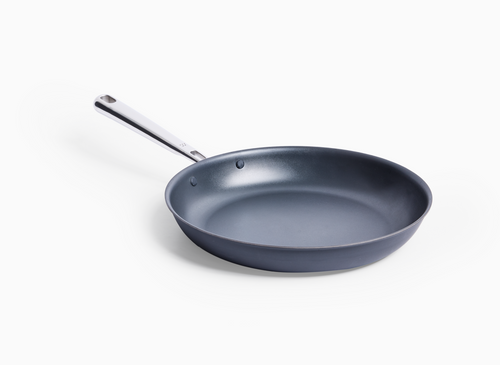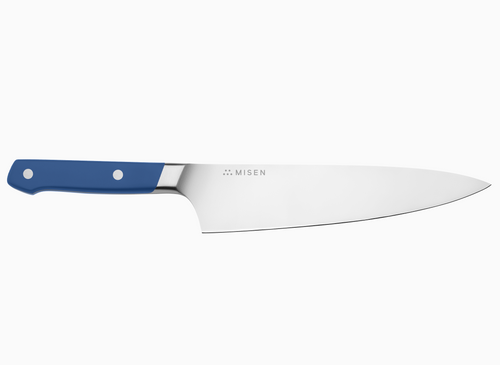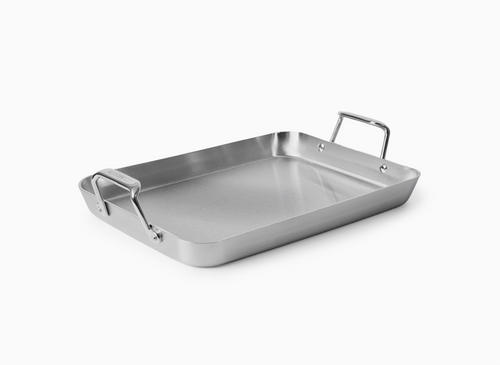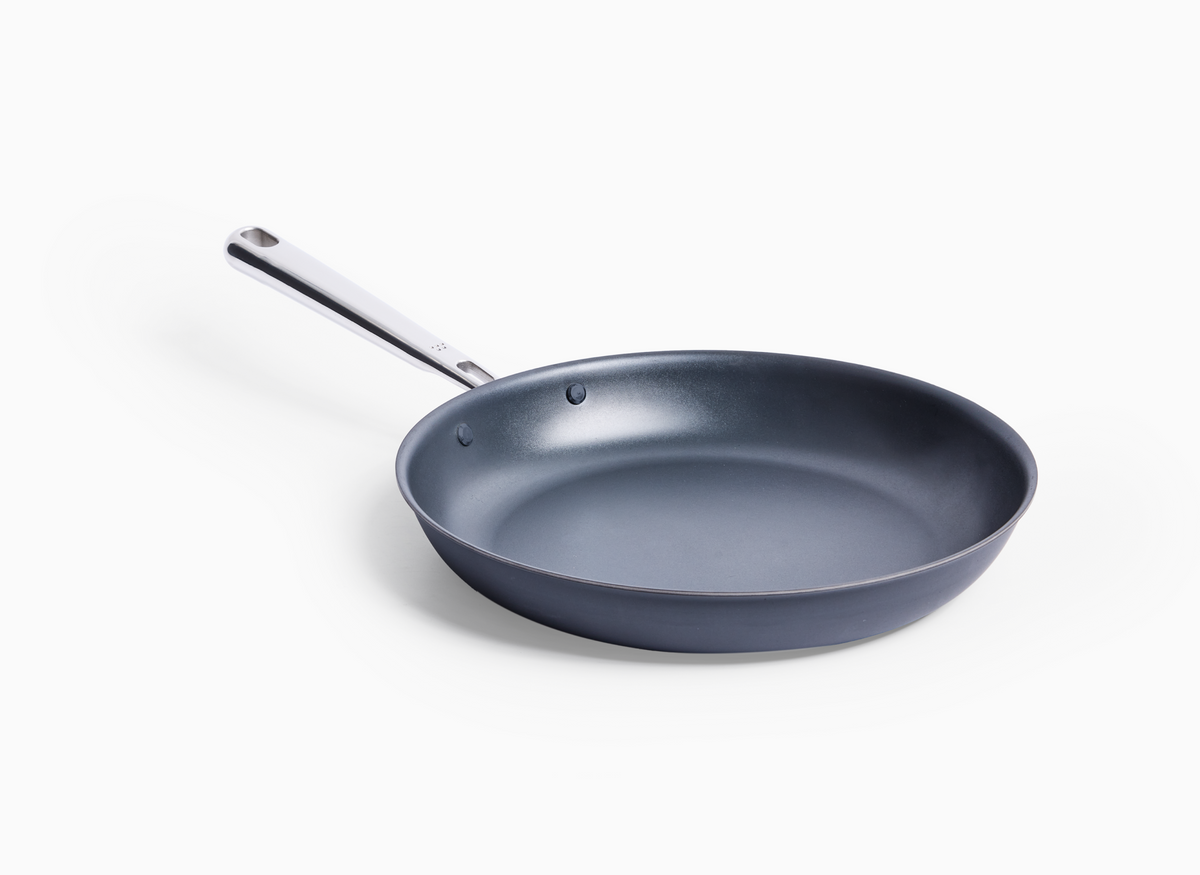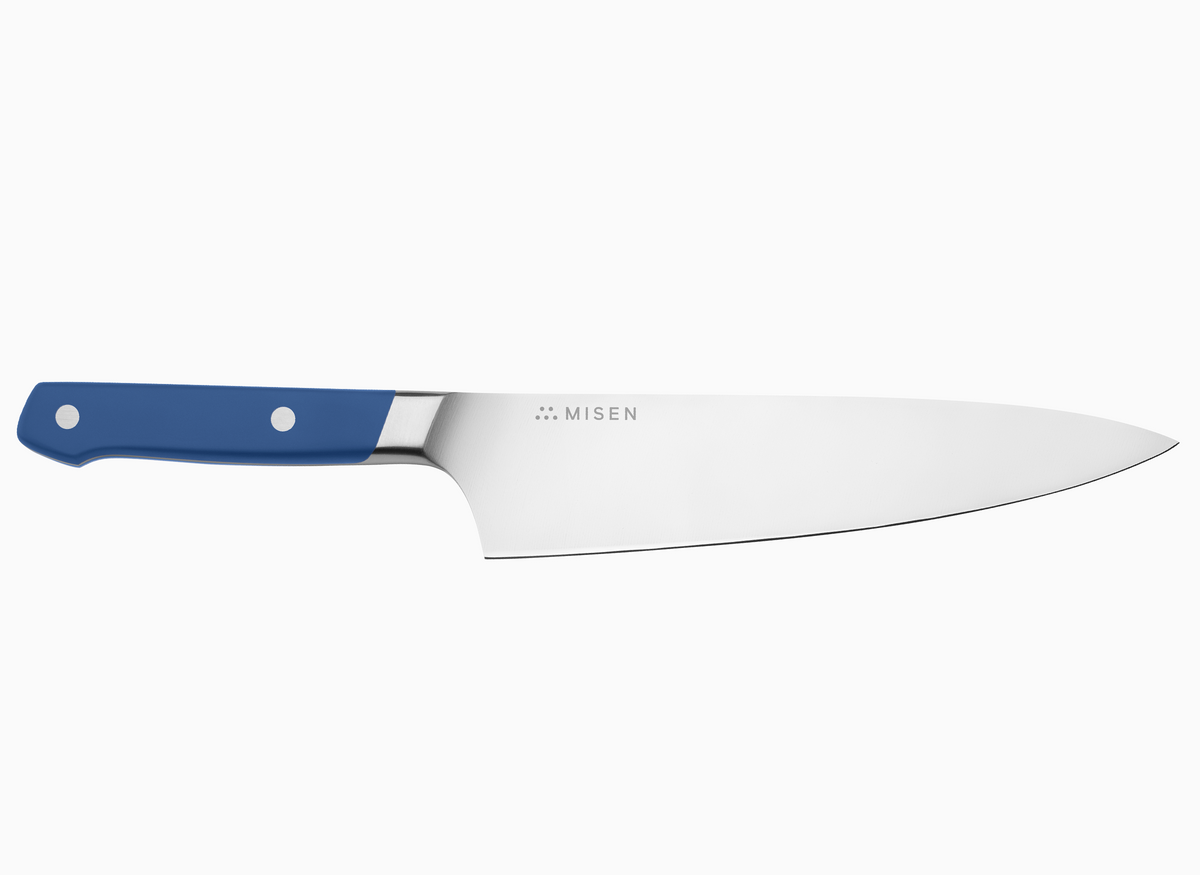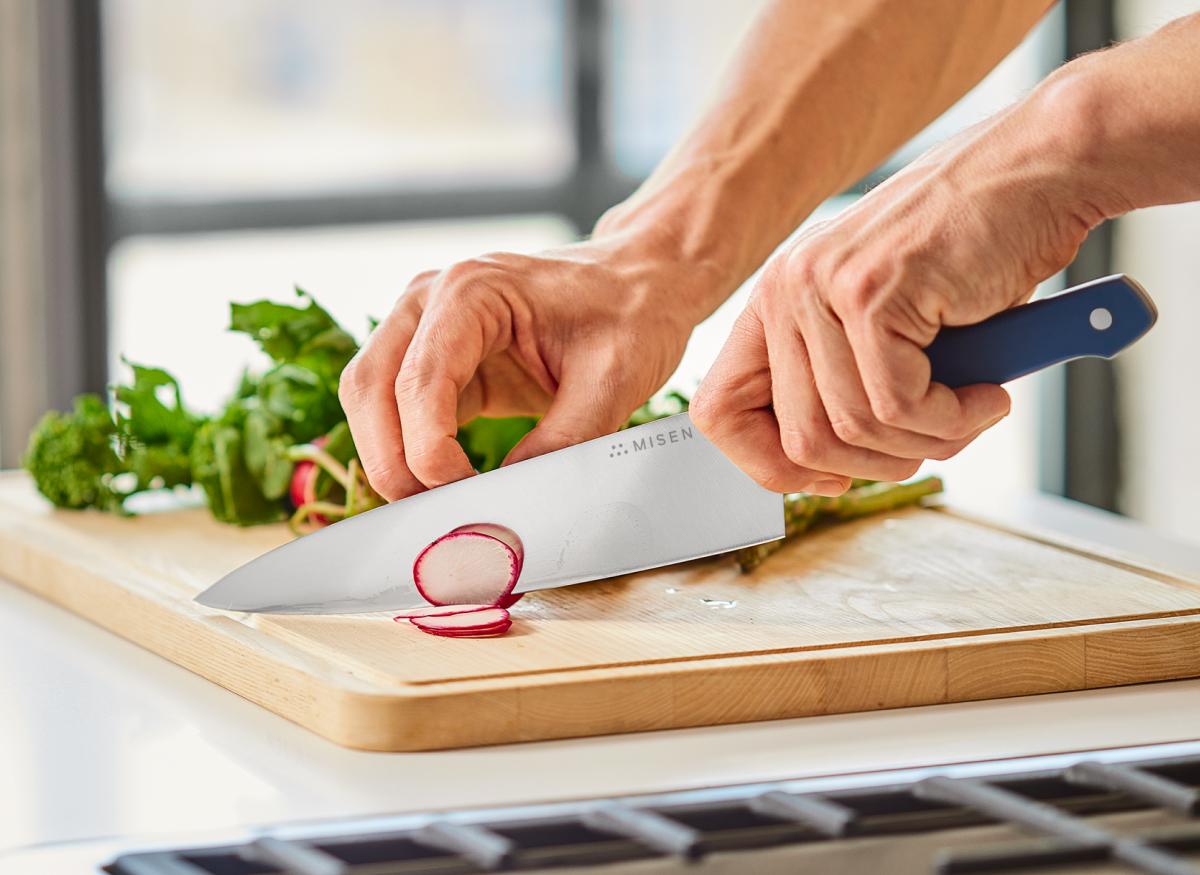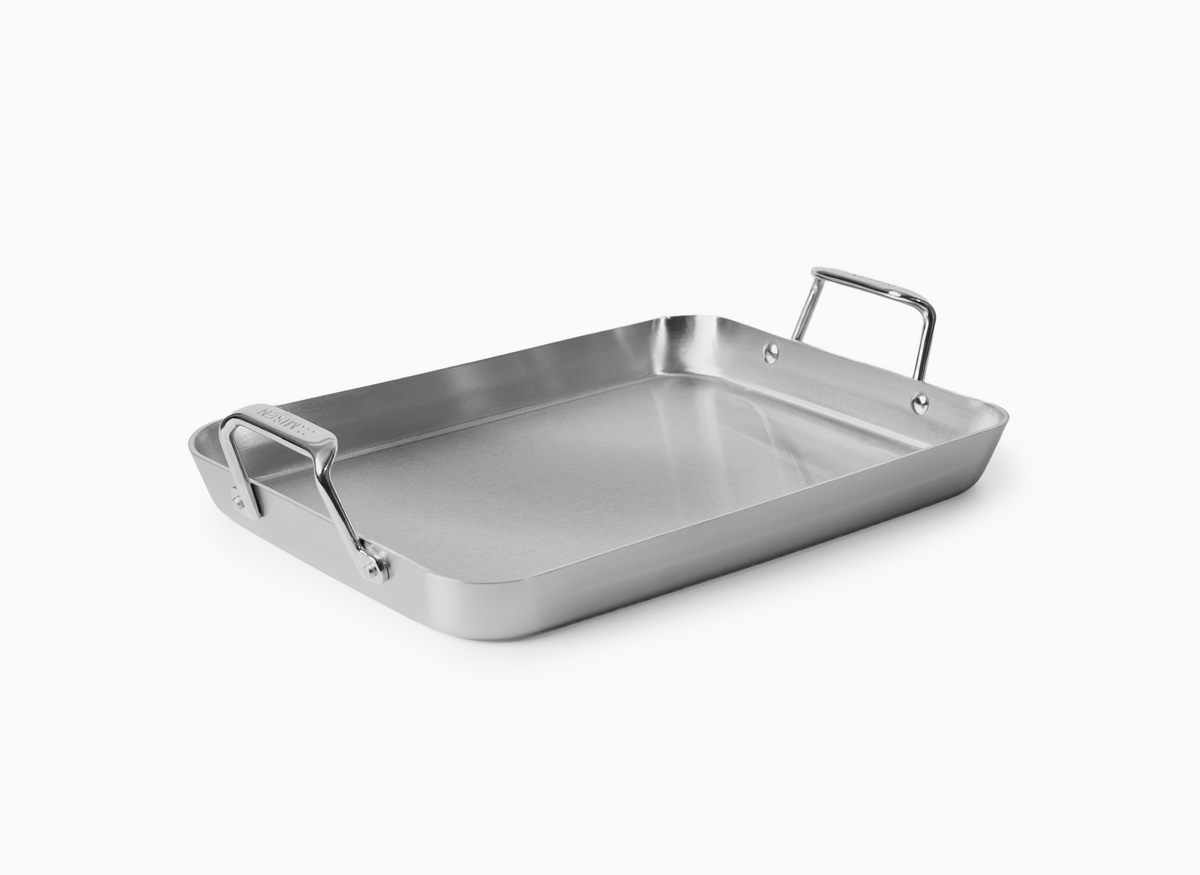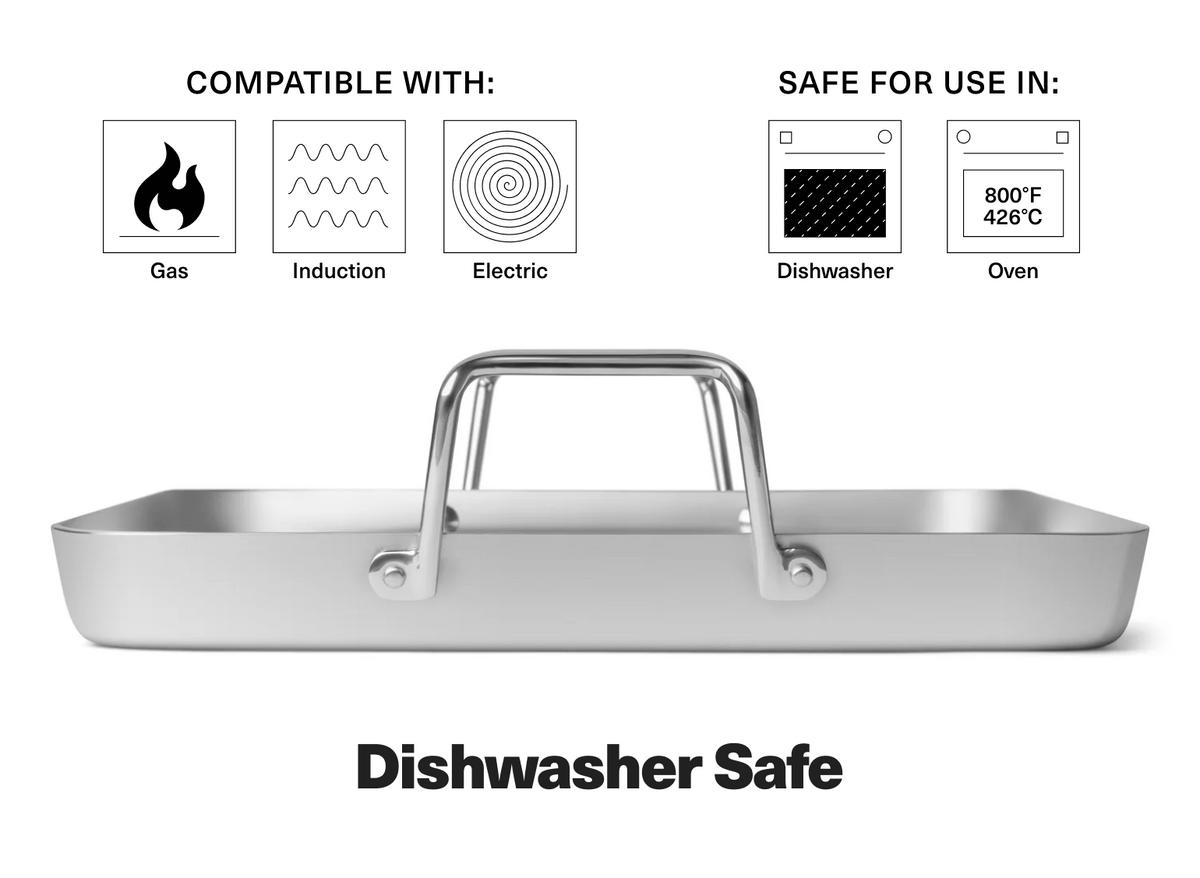What Is a Saucepan? A Complete Definition and Introduction

A saucepan is far more than a simple pot with a handle: its tall, narrow walls, precise sizes (1–4 qt), and choice of clad stainless, anodized aluminum, copper, cast iron, or non-stick/ceramic coatings give cooks unmatched control over heat conduction, retention, and evaporation, letting you choose the perfect pan for everything from a single portion of oatmeal to a glossy beurre blanc. The article walks you through how multi-ply cores and bottom-flatness boost efficiency, why curved sauciers excel at whisking while straight-sided saucepans tame boil-overs, and how 2–3 qt “Goldilocks” models earn daily-driver status while specialty double boilers gently cradle chocolate or hollandaise. You’ll learn pro tricks—reduce stock 2:1 for sauce, judge doneness by the coating-spoon test, use the “sauter” flip for even browning, and match grain-to-water ratios so rice emerges fluffy every time—and why reaching for a saucepan instead of a wide pot or sauté pan can rescue a sauce from scorching or over-reduction. With these insights you can buy, season, and maintain pans that last generations, blanch vegetables to lock in color, or simmer, steam, and caramelize with restaurant-quality precision, turning a humble saucepan into the most versatile engine of your kitchen.
Materials and Construction
Choose your saucepan like a pro: stainless multi-ply for all-round durability, hard-anodized aluminum for budget speed, copper for precision control, or cast iron for steady heat.
Common Materials: Stainless Steel, Aluminum, Copper, and Cast Iron
Stainless steel saucepans combine durability with non-reactivity, preventing food discoloration or metallic flavors. Premium versions use 18/10 steel (18% chromium, 10% nickel) for maximum corrosion resistance [3]. Since pure stainless conducts heat poorly, quality saucepans feature an aluminum or copper core bonded between steel layers for even heating [3]. This multi-ply construction, like in high-quality [stainless steel pans](https://misen. com/products/stainless-steel-skillet), works on all cooktops including induction and transitions seamlessly from stovetop to oven [1]. Aluminum saucepans conduct heat nearly as well as copper while staying lightweight and budget-friendly [3].
Raw aluminum can react with acidic ingredients like tomatoes or citrus, though. That's why manufacturers typically anodize the aluminum (creating a hardened, non-reactive surface) or apply non-stick coatings [3]. Hard-anodized aluminum offers excellent scratch resistance and quick heat response—a practical choice for making sauces without breaking the bank [1]. Copper saucepans provide unmatched heat control, responding instantly when you adjust the temperature—crucial for delicate sauces [3]. Professional chefs love copper because it heats uniformly, preventing those dreaded hot spots that scorch sensitive ingredients [2]. Quality copper saucepans have thick walls (1/16 to 1/8 inch) and need interior lining with tin or stainless steel to prevent reactions with your food [3].
Yes, copper requires a bigger investment and regular polishing to keep it shiny, but it delivers exceptional cooking precision [3]. Cast iron saucepans excel at heat retention rather than conductivity [1]. Their substantial weight and density create excellent temperature stability once heated, though they're slow to respond when you adjust the heat [3]. Traditional cast iron needs seasoning to develop its natural non-stick quality and prevent rust, while enameled versions skip this maintenance step [3]. Both types are incredibly durable—we're talking generations of use with proper care—making cast iron a true investment piece for those long-simmered sauces and reductions [1].
Non-Stick vs. Traditional Surfaces: Pros and Cons
Saucepans come with either traditional uncoated surfaces or non-stick coatings, each offering distinct advantages. Traditional non-stick cookware typically contains polytetrafluoroethylene (PTFE, commonly known as Teflon) that prevents food from sticking. These pans excel at cooking delicate foods like eggs and sauces that might otherwise cling to the surface [4]. You'll use less oil and cleanup is a breeze, making them practical for everyday cooking. However, concerns exist about PTFE coatings, which can emit potentially harmful fumes when heated above 480°F [5]. These pans typically last just a few years—their coating inevitably wears down, no matter how carefully you treat them [5].
Ceramic non-stick provides an alternative to traditional PTFE coatings. These pans use a silicon-based gel solution sprayed onto the metal core during manufacturing [5]. Many home cooks choose ceramic for its perceived safety benefits—manufacturers often market them as PTFE-free and non-toxic [5]. Despite these claims, ceramic coatings tend to be more brittle than PTFE, making them prone to both chipping and scratching [5]. Either way, both ceramic and traditional non-stick pans need replacing every few years as their effectiveness fades with regular use [5]. Uncoated stainless steel provides durability and versatility but requires proper technique to prevent sticking.
It excels at browning and braising, handles high heat without degrading, and won't react with acidic ingredients [6]. Cast iron offers excellent heat retention and develops a natural non-stick quality with proper seasoning. While heavier than other options, properly maintained cast iron can last generations—a true long-term investment [4]. Carbon steel combines many benefits of cast iron but weighs less, making it a favorite in professional kitchens [6]. For sauce-making specifically, copper provides unmatched heat control, responding instantly to temperature changes—crucial when crafting delicate sauces that require precise temperature management [4].
Understanding Heat Conductivity and Retention
Heat conductivity measures how efficiently a material transfers and distributes heat, while heat retention refers to how long it holds that temperature. These properties directly impact your cooking results and should guide which saucepan you choose [7]. Copper leads the pack with the highest conductivity (385 W/m·K), heating up and cooling down almost instantly—perfect for temperature-sensitive sauces that need precise control [7].
Aluminum follows at 205 W/m·K, offering quick, even heating at a friendlier price point [7]. Stainless steel, despite being incredibly durable, has poor conductivity (45 W/m·K). That's why quality stainless saucepans incorporate copper or aluminum cores to boost performance [7].
Cast iron and ceramic sit at the opposite end—they heat slowly but hold temperature like champions, making them ideal for dishes that need stable, consistent heat rather than quick temperature changes [7]. This explains why professional chefs keep different saucepans on hand: high-conductivity materials for quick sautéing or delicate sauces, and high-retention materials for slow-cooked dishes [7]. Many modern saucepans use cladding technology, fusing layers of different metals to combine stainless steel's non-reactive properties with the superior heat conductivity of copper or aluminum [7].
How Construction Affects Performance
Your saucepan's physical construction directly impacts how well it cooks. Research shows that bottom flatness significantly affects heat transfer—flatter surfaces achieve up to 8. 8% higher efficiency through better contact with your burner [8].
Material layering matters just as much. Multi-ply constructions with aluminum or copper cores distribute heat more evenly than single-material designs [8]. Wall thickness creates a real-world tradeoff: thicker walls improve heat retention but make the pan slower to respond when you adjust the temperature [8].
Different constructions also perform differently on various heat sources. Pans designed for induction cooking hit efficiency ratings of 80-84% compared to just 40% on traditional gas burners [8]. These construction details explain why professional kitchens stock different saucepans for different cooking techniques [8].
Types and Sizes of Saucepans
From the precision-perfect 1–2-quart pan that reheats a single bowl of soup without scorching to the “Goldilocks” 3-quart workhorse that boils pasta, steams vegetables, and whips up custards in one compact vessel, the right mid-size saucepan turns everyday cooking into faster, cleaner, and more versatile kitchen craft.
Small Saucepans (1-2 Quarts): Uses and Benefits
Small saucepans ranging from 1-2 quarts serve specific purposes in both home and commercial kitchens. Their compact size makes them ideal for preparing individual portions, reducing the risk of cross-contamination when serving different dishes [10]. In professional settings, these smaller pans find their place in cafes and delis, though larger establishments also benefit from having them available for specialty preparations [10].
A 1-2 quart saucepan excels at preparing single servings of rice or grains, heating soup portions, and crafting small-batch sauces without excessive evaporation [9]. The controlled environment created by their tall sides and smaller surface area makes them perfect for delicate reductions and maintaining precise temperatures when cooking. For practical reference, a standard 2-quart saucepan can accommodate 7 hard-boiled eggs without stacking them on top of each other [9].
These compact vessels also prove remarkably efficient for reheating leftovers, as they warm foods quickly while maintaining moisture and preventing scorching when used with low to medium heat [9]. Their manageable size makes them easier to handle and clean than larger cookware, saving valuable kitchen space while still offering essential functionality for daily cooking tasks.
Medium Saucepans (2-3 Quarts): The Versatile Workhorse
Medium saucepans (2-3 quarts) serve as the most versatile workhorses in any kitchen setup. Professional cooking sites describe the 3-quart size as the "Goldilocks ideal" – large enough for multiple servings yet manageable for daily use [11]. This size excels at cooking short pasta, steamed vegetables, fluffy grains, and slow-simmering sauces without requiring excessive storage space [11]. The middle capacity makes these pans suitable for both quick reheating tasks and more ambitious cooking projects, from boiling a few eggs to crafting delicate caramel for complex desserts [11].
Testing shows a quality 3-quart saucepan handles diverse cooking techniques including whisking together sauces or custards, making caramel, cooking grains, and steaming vegetables [12]. Even if building a minimal kitchen collection, experts consider this size essential for everyday cooking flexibility [12]. Medium saucepans typically feature ergonomic considerations not found in smaller versions, such as improved handle design for safer maneuvering when full [11]. Many models in this range include flared lips for clean pouring and handles designed to stay cool longer during extended cooking sessions [11].
When comparing similar-looking options, pay attention to the pan's weight distribution, as better-balanced designs around 3-3. 6 pounds offer stability for stirring without becoming too heavy for one-handed pouring [12]. The wide availability of this size makes it possible to find quality options across price points, from budget-friendly versions starting around $30 to premium multi-ply construction models that can exceed $100 [13].
Large Saucepans (3-4+ Quarts): When Size Matters
Large saucepans (3-4+ quarts) excel at bulk food preparation while maintaining the controlled cooking environment that distinguishes saucepans from wider pots. These substantial vessels serve casual to upscale restaurants, pizzerias, and catering operations that routinely prepare meals for multiple diners simultaneously [14]. A 4-quart "essential pan" combines depth with a wider mouth, making it ideal for one-pot meals like macaroni and cheese, spaghetti with sauce, or fried rice—dishes where ingredients need mixing in a contained environment [15].
However, their larger diameter creates more heating surface area, which demands attention when preparing smaller quantities that might cook too rapidly and risk burning [15]. The extra capacity proves particularly valuable when scaling recipes for gatherings or meal prepping for the week. While versatile, these larger saucepans require more storage space and typically weigh more than their smaller counterparts, considerations that matter in space-constrained kitchens [15].
Many professional and home cooks find that pairing a large saucepan with a medium-sized option offers the ideal combination of capacity and convenience for most cooking scenarios.
Specialty Saucepans and Design Variations
Beyond standard saucepans, double boilers represent a specialized design variation that addresses specific cooking challenges. Double boilers consist of two components: a lower pot that holds water and an upper pot that sits above the water line where ingredients are placed [16]. This design creates indirect heat through steam, preventing delicate ingredients from burning or separating.
Most quality double boilers feature aluminum disc layering in the bottom for even heat distribution while maintaining the durability and non-reactive properties of stainless steel [16]. This construction eliminates hot spots that can ruin temperature-sensitive foods like chocolate or custards. Double boilers typically come in smaller capacities (1-2 quarts) with features like tempered glass lids with steam vents for visibility during cooking [16][17][18].
The indirect heating method makes these specialized saucepans essential for melting chocolate, creating emulsified sauces like hollandaise, or gently warming delicate dairy products without scorching [16]. While less versatile than standard saucepans, double boilers excel at precise temperature control for specialized cooking techniques where direct heat would compromise results.
Saucepans vs. Other Cookware
Choose a saucepan for sauces and custards when you need tight evaporation control, grab a pot for big-batch soups and pasta, and reach for a saucier with its curved corners to keep delicate mixtures from scorching.
Saucepan vs. Pot: Key Differences in Design and Function
Saucepans and pots differ significantly in both physical design and cooking function, though many home cooks use these terms interchangeably. Saucepans feature tall, straight sides with a narrower width-to-height ratio and a single long handle, occasionally including a helper handle on larger models [19][20]. This design creates a smaller surface area that controls evaporation and maintains moisture—perfect for precise cooking techniques [20]. In contrast, pots have deeper, more cylindrical sides with two looped handles on either side [19].
Their wider bases and greater volume accommodate larger batches of food [19][20]. These design differences directly impact your cooking results. Attempting to reduce a sauce in a wide pot extends cooking time and affects consistency, while trying to boil pasta in a small saucepan risks messy boil-overs [20]. Saucepans excel at tasks requiring controlled heat and moisture retention: sauces, custards, simple syrups, and small portions of grains [19][20].
Their long handles provide better control for precise pouring and manipulation during cooking [19]. Meanwhile, pots shine with larger-volume cooking: pasta, stews, soups, and braising meat, where their dual handles make safer lifting when full [19][20]. Choosing correctly matters—using a pot for sauce-making may prevent proper thickening, while using a saucepan for large-batch cooking creates inefficiencies and potential kitchen messes [19][20].
Saucepan vs. Saucier: When Rounded Corners Matter
Saucepans and sauciers differ primarily in their corner design, with each excelling at specific cooking tasks. Sauciers feature rounded corners and slightly flared walls, while traditional saucepans have straight sides with sharp 90-degree angles [21]. This seemingly minor design variation significantly impacts cooking performance. The rounded corners of a saucier allow whisks and spoons to reach every part of the pan—preventing sauce from collecting and burning in corners that utensils can't access [23].
This makes sauciers particularly valuable when preparing delicate mixtures that require constant movement, like pastry cream, risotto, and emulsified sauces [21]. Beyond whisking access, sauciers' curved design promotes even heat distribution by eliminating sharp corners where temperature gradients can form [22]. The flared walls also increase surface area at the top compared to the bottom, accelerating evaporation for faster reductions [22]. While saucepans excel at containing liquids prone to bubbling over thanks to their taller, straight sides, sauciers prove superior for any technique requiring constant stirring or temperature precision [21][23].
Both pan types typically feature stainless steel construction with aluminum or copper cores for optimal heat conductivity [21]. For everyday cooking flexibility, professional chefs often recommend sauciers over traditional saucepans since they can perform all the same functions while eliminating corner-sticking issues [21].
Saucepan vs. Saute Pan: Depth and Cooking Techniques
Saucepans and saute pans differ fundamentally in their proportions, which directly influences cooking capabilities. Saute pans feature a wide, flat base with relatively short vertical sides that form a right angle, creating maximum direct contact between food and heating surface [24]. This design excels at techniques requiring direct heat transfer—searing meats, sautéing vegetables, and browning ingredients before braising. The larger cooking surface allows more ingredients to contact the heat simultaneously, making saute pans ideal for one-pot meals [25].
In contrast, saucepans have a narrower base with substantially taller walls, creating a deeper vessel that controls evaporation [24]. This configuration maintains consistent moisture and temperature—perfect for sauces, gravies, and small-batch liquids [25]. A 3-quart saute pan and 3-quart saucepan hold the same volume, but the saute pan distributes this across a wider, shallower area, which is precisely why liquids reduce faster in saute pans [25]. These dimensional differences dictate their best uses: saute pans excel at techniques combining dry heat (searing) with moderate liquid (braising), while saucepans perform best with predominantly liquid-based cooking [24].
For heat dynamics, saucepans' smaller diameters heat more evenly with less risk of hot spots. Saute pans provide more surface area for faster cooking but require attention to prevent burning [25]. Professional kitchens typically reach for saute pans for main dishes involving multiple techniques (like seared chicken thighs finished in sauce) and saucepans for supporting elements like reductions, grains, and component sauces [24].
When to Choose a Saucepan Over Other Cookware
Saucepans excel when cooking ingredients prone to bubbling over—rice, pasta, or oatmeal—as their tall, straight sides contain liquids better than wider alternatives [21]. Their narrow design creates a controlled environment ideal for poaching eggs, simmering grains, and reducing sauces more efficiently than pots where faster evaporation occurs [27].
Unlike sauciers with rounded corners that excel at constant stirring, saucepans maintain superior temperature stability with their straight sides and deeper profile. This makes them the better choice for recipes where consistent heat matters more than whisking access [21].
Choose saucepans for everyday tasks like boiling water, reheating soups, or cooking side dishes when you need a practical balance of capacity and control [27]. They're your go-to when liquid retention and temperature management take priority over constant stirring—save sauciers for delicate emulsions and pots for larger batch cooking [21][26].
Practical Uses for Saucepans
Master your saucepan's gentle simmer to thicken sauces by reduction, cook flawless grains without boil-overs, and nail the 2-to-1 stock rule for perfect reductions every time.
Mastering Sauces, Gravies, and Reductions
The tall sides and controlled environment of a quality saucepan make it your best friend for sauce-making. Start by removing any solids from your pan, then set it over medium heat—you want a gentle simmer, not a rolling boil, to avoid any bitter notes [28] [29]. The magic of reduction is simple: as water evaporates, your sauce naturally thickens and flavors concentrate [28]. Pro tip: a wider saucepan speeds up the process since more surface area means faster evaporation [29].
You've got three go-to methods for thickening: let it reduce naturally, whisk in a roux (that's just butter and flour cooked together), or swirl in cold butter at the end for a glossy finish [28] [30]. Making roux? Cook it 4-5 minutes for a light version, 7-8 minutes for something nuttier, or push it to 15 minutes for deep, caramelized flavor [28]. Your sauce is ready when it coats the back of a spoon—draw a line with your finger, and if it holds, you're golden [29].
For reductions, remember the 2-to-1 rule: two cups of stock becomes one cup of finished sauce [30]. Went too far? No worries—just add a splash more stock to thin it back out [30].
Cooking Grains, Pasta, and Legumes
Those tall, straight sides make saucepans perfect for grains, pasta, and legumes—no more stovetop disasters from boil-overs. Here's the secret to fluffy, perfectly cooked grains: keep it at a gentle simmer, not a hard boil [32]. The basic method stays the same for most grains: combine them with water or broth, bring to a boil, then turn down the heat and let them simmer covered until all the liquid's absorbed [31].
Getting the water ratio right is key—brown rice likes 2½ cups water per cup of grain, quinoa needs 2 cups, and hearty barley wants 3 cups [31]. For beans, you can soak them overnight in your saucepan, or go the quick route: boil for a few minutes, then let them sit for an hour [32]. A medium 2-3 quart saucepan handles most jobs beautifully, giving you enough room for 3-4 servings without taking up your whole stovetop [31].
Want to boost nutrition and cut cooking time? Soak your grains for 7-8 hours beforehand—it makes them easier to digest and can cut cooking time in half [33].
Blanching Vegetables and Boiling Eggs
Blanching vegetables in a saucepan is like hitting the pause button on freshness—it locks in color, flavor, and texture whether you're prepping for the freezer or just getting a head start on dinner. The process is simple: dunk veggies in boiling water briefly, then shock them in ice water to stop the cooking [34]. This quick technique halts the enzymes that would otherwise break down your produce over time [35]. For best results, use plenty of water—about a gallon per pound of vegetables. Get it boiling vigorously before adding your veggies [35].
Here's how you know you're doing it right: the water should bounce back to a boil within a minute. Taking longer? You've got too many vegetables in there [35]. Timing is everything—too short and you actually make things worse by waking up those enzymes, too long and you'll lose flavor and nutrients [35]. After blanching, plunge everything into ice water for the same amount of time you boiled them [35].
Your saucepan's tall sides keep the bubbling water contained, while the long handle makes it safe to transfer hot veggies to their ice bath. Blanching does more than prep for freezing—it cleans your produce, brightens colors, and even helps remove pesticide residues [35][36]. If you're worried about losing nutrients in the water, try steam blanching instead. It takes about 50% longer but keeps more vitamins where they belong [35]. Just remember that some water-soluble nutrients will always leach out—it's the trade-off for this otherwise brilliant technique [36].
Beyond the Basics: Creative Saucepan Techniques
Ready to push your saucepan beyond the basics? Let's borrow some tricks from restaurant kitchens. Professional chefs use a technique called "sauter"—literally "to jump" in French—where ingredients dance around the pan with quick tosses [37]. The key is working with moderate amounts of food (too much drops the temperature) and cutting everything the same size so it all cooks evenly [37].
Want restaurant-quality browning on your meats? Pat them completely dry first, then let your saucepan get properly hot. That gorgeous crust happens when proteins and sugars react together—but only on dry surfaces with enough heat [37]. This is why that satisfying sizzle means you're doing it right.
Building complex dishes? Think like a chef and add ingredients by cooking time—start with what takes longest, finish with quick-cooking items [37]. While specialty pans have rounded corners for tossing, your trusty stainless steel saucepan handles these techniques beautifully, especially when working with tomatoes, wine, or citrus that might react with other materials [37].
- Multi-ply stainless with aluminum/copper core gives durable, even heating on any cooktop.
- 3-quart saucepan is the most versatile size for everyday grains, sauces, and small batches.
- Sauciers beat saucepans for whisked or stirred sauces; saucepans win for controlled reductions.
- Copper offers instant heat control, cast iron holds temperature, aluminum balances speed and cost.
- Use tall saucepan sides to prevent boil-overs when cooking grains or reducing sauces steadily.
- https://www.vikingculinaryproducts.com/blogs/articles/the-most-durable-cookware-materials-ranked?srsltid=AfmBOoqkfScKIfx3tZnuz-lN9_T5wJzMe0bgduASzjg3OT8ZEKW7txZD
- https://stahlkitchens.com/blogs/news/which-metals-are-best-for-cooking?srsltid=AfmBOoo26Y8Ke3XSk91CGlhoZOWuvZQvm-_sJmQy7DWFgYMT_uo4uXew
- https://www.kitchenkapers.com/pages/cookware-materials-and-why-they-matter?srsltid=AfmBOopR8seytigm3Mm3le3CQSlbS2xlSOa7_5uJLasVw5kqLqW7L_JU
- https://foodrevolution.org/blog/healthy-cookware/
- https://www.seriouseats.com/nonstick-vs-ceramic-skillets-7110252
- https://www.consumerreports.org/home-garden/cookware/buying-guide/
- https://thermtest.com/the-impacts-of-thermal-conductivity-on-cooking-technique
- https://www.sciencedirect.com/science/article/abs/pii/S1359431115011084
- https://misen.com/blogs/news/what-is-a-saucepan-a-comprehensive-guide?srsltid=AfmBOooI7DBRHNg9DOJEATXsbB7JpKFuHnnfTVlajxTWqw0Py3Pg713N
- https://www.webstaurantstore.com/guide/928/which-saucepan-should-you-use.html?srsltid=AfmBOopMLbKSqWNPtoBeS2QSUNYJP4RPxBe3GlmiJ1xXM3VfT4TeDXtY
- https://www.nytimes.com/wirecutter/reviews/the-best-small-saucepan/
- https://www.epicurious.com/expert-advice/the-best-saucepans-for-cooking-literally-everything-article
- https://www.amazon.com/RATWIA-Nonstick-Saucepan-Set-Restaurant/dp/B0B1TRRCMP
- https://www.webstaurantstore.com/guide/928/which-saucepan-should-you-use.html?srsltid=AfmBOooLouzJL7kgORDP3GPwoKUS-c3O7kJaLUMVosskbMZYHOrKMhnL
- https://www.reddit.com/r/Cooking/comments/3l1h3a/help_potpan_sizes_and_their_respective_uses/
- https://www.amazon.com/Cook-Home-02655-Quarts-Double/dp/B07VMP3TN7
- https://www.vermontcountrystore.com/stainless-steel-1-quart-double-boiler/product/82527
- https://www.homedepot.com/p/Classic-Cuisine-1-5-Qt-Stainless-Steel-Double-Boiler-Saucepan-with-Lid-HW031046/304491924
- https://www.masterclass.com/articles/saucepan-vs-pot-explained
- https://www.marthastewart.com/saucepan-vs-pot-11693836
- https://www.seriouseats.com/saucepans-vs-sauciers-whats-the-difference-7550331
- https://www.centurylife.org/pick-one-straight-vs-curved-saucepan-saucier-sauteuse-sidewalls/
- https://www.lecreuset.ca/en_CA/blog/saucepan+vs+saucier.html?srsltid=AfmBOoro9PIyCNf_g2OPGnozEYNBsJCz_Yxu6FMlkFzcNbCSL5mdQEks
- https://www.foodnetwork.com/how-to/packages/shopping/articles/difference-between-a-saute-pan-and-sauce-pan
- https://prudentreviews.com/saucepan-vs-saute-pan/
- https://www.webstaurantstore.com/blog/3526/saucepan-vs-pot.html?srsltid=AfmBOoo6tB_EUaNRfRoEfbsZYpMjgCmX0aMR8Ph6EvQ_dQIKu1CWpFzR
- https://www.lecreuset.ca/en_CA/blog/saucepan+vs+saucier.html?srsltid=AfmBOorDA9FBz1VrIklUDiWhPXNZRSYf9OFNHTDAsE9ekcRG7gO6zUn9
- https://www.finedininglovers.com/explore/articles/science-sauce-reduction
- https://www.bonappetit.com/test-kitchen/cooking-tips/article/how-to-make-a-reduction?srsltid=AfmBOop2xIAX833N41bAvVEl80DFRpcyjG7RSIkYebapFi8d64Bbw_9x
- https://www.reluctantgourmet.com/simple-reduction-sauce/
- https://happyherbivore.com/2013/08/15-grains-how-to-cook-ratios-types-of-grains/
- https://www.health.ny.gov/prevention/nutrition/resources/legumes.htm
- https://traditionalcookingschool.com/food-preparation/grain-cooking-chart/
- https://feelgoodfoodie.net/recipe/how-to-blanch-vegetables/
- https://nchfp.uga.edu/how/freeze/freeze-generalinformation/blanching-vegetables/
- https://en.wikipedia.org/wiki/Blanching_(cooking
- http://www.professionalsecrets.com/en/ps/ps-university/chef-de-commis/kitchen-tool-essentials/about-sauteuse/
